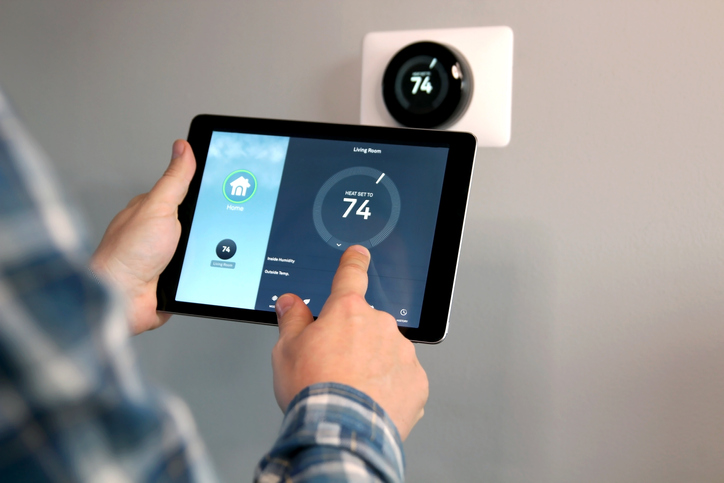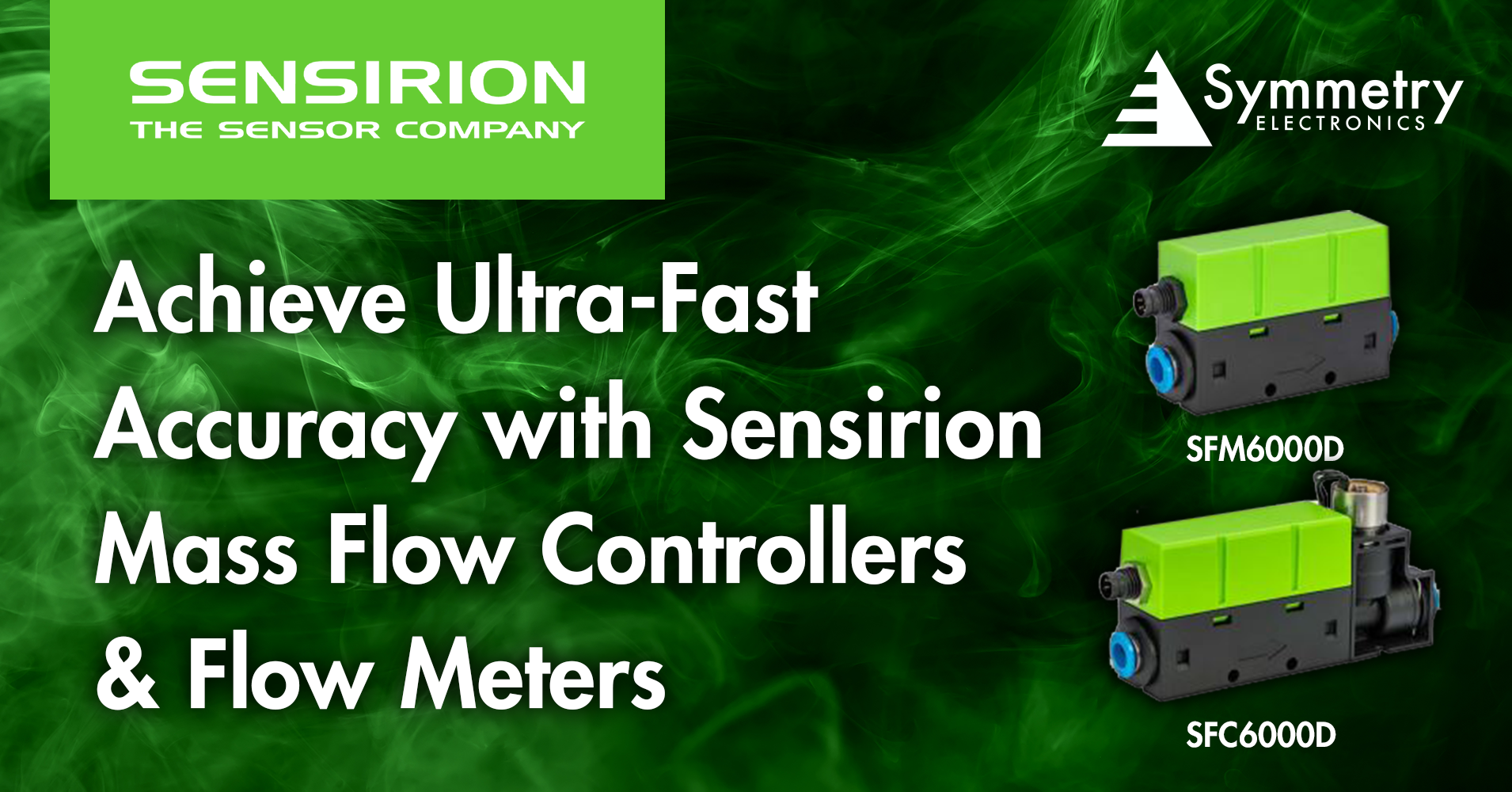- Home
- Symmetry Blog
- How Smart HVAC Systems Turn Up the Heat on Precision Control
How Smart HVAC Systems Turn Up the Heat on Precision Control
About Jari Haiston

From manufacturing plants to research laboratories and residential homes, the ability to control your climate is crucial. Traditional Heating, Ventilation, and Air conditioning (HVAC) systems have long been the backbone of environmental control, but the emergence of Smart HVAC Systems is taking precision to a whole new level.
In an age where organizations are continuously acknowledging that efficiency, customization, and sustainability are paramount, the integration of smart technology in HVAC systems offers unprecedented control, adaptability, and energy efficiency to meet the diverse needs of today’s users.
The Smart System Revolution
Gone are the days of one-size-fits-all temperature settings. Smart HVAC systems utilize cutting-edge technology to adapt and respond to dynamic conditions in real time. A smart HVAC system is comprised of advanced and interconnected technology to optimize efficiency, enhance control, and provide personalized comfort. This level of intelligence not only enhances energy efficiency but also ensures a tailored environment that meets the specific needs of different applications.
These systems leverage sensors, communication networks, and intelligent algorithms to monitor, analyze, and respond to environmental conditions in real time. Here are some key features and components of smart HVAC systems:

Sensors and Data Collection:
Smart HVAC systems are equipped with sensors that measure various environmental parameters such as temperature, humidity, occupancy, and air quality. These sensors collect data and feed it into the system to provide a comprehensive understanding of the current conditions.
Connectivity and IoT Integration:
Smart HVAC systems are often part of the Internet of Things (IoT), allowing them to connect to a network and communicate with other devices and systems. IoT integration enables remote monitoring and control through smartphones, tablets, or web interfaces.
Adaptive Control Algorithms:
The systems use advanced algorithms to analyze the collected data and make real-time adjustments to heating, ventilation, and air conditioning settings. Adaptive control allows the system to respond dynamically to changes in occupancy, weather conditions, and other factors.
Remote Accessibility and Control:
Users can remotely monitor and control their HVAC systems using mobile apps or web interfaces, providing flexibility and convenience. This feature is particularly useful for adjusting settings when away from home or the office.
Learning Capabilities:
Some smart HVAC systems have learning capabilities that adapt to user preferences and habits over time. By learning from historical data and user inputs, the system can anticipate temperature and comfort preferences.
Health and Air Quality Monitoring:
In addition to temperature control, some smart HVAC systems incorporate features for monitoring indoor air quality. They can provide alerts or take corrective actions to ensure a healthy and comfortable indoor environment.
Overall, the integration of smart technology into HVAC systems aims to provide a more efficient, customizable, and responsive solution for maintaining optimal environmental conditions while also contributing to energy conservation and sustainability.
Precision Climate Control at Your Fingertips
Imagine having the ability to fine-tune temperature and humidity levels with just a few taps on your smartphone. Many already are. According to Business Research Insights, the global market size for smart HVAC control already reached $9.67 billion in 2022. At a CAGR of 10.8%, it’s expected to reach $17.89 billion by 2028. Smart HVAC’s rising adoption rate can likely be attributed to the following key benefits:
Energy Efficiency Redefined
HVAC systems leverage advanced algorithms and sensors to optimize energy consumption. By intelligently adjusting settings based on occupancy, external weather conditions, and equipment requirements, these systems not only reduce energy costs but also contribute to a more sustainable engineering ecosystem.
Easy Integration into Existing Smart Infrastructure
Connected technology has woven its way into almost every aspect of modern life, and HVAC systems are no exception. Smart HVAC systems and smart thermostats seamlessly integrate with IoT platforms, allowing for data-driven insights and predictive maintenance. This proactive approach helps engineers identify potential issues before they escalate, minimizing downtime and maximizing productivity.

Significant Cost Savings
Smart heating and cooling systems focus on optimizing energy usage by adjusting settings based on actual demand rather than running on fixed schedules. They may incorporate features such as zone-based heating and cooling to concentrate energy where it is needed most. By dynamically responding to factors such as occupancy, weather conditions, and specific requirements, these systems avoid unnecessary energy consumption.
Exploring Smart Climate Control: 3 Use Cases
Emerging as an indispensable tool across various industries, Smart heating and cooling is not only revolutionizing heating, ventilation, and air conditioning but is also proving to be instrumental in addressing the unique standards of specialized environments. Smart HVAC systems are reshaping environmental control in the following critical settings:
1. Precision Manufacturing
In smart manufacturing environments where temperature and humidity control are critical, Smart HVAC systems ensure that the production floor remains at optimal conditions. This results in improved product quality and reduced waste.
2. Laboratories and Research Facilities
In research settings, where experiments demand precise environmental conditions, Smart HVAC systems provide the level of control needed to ensure the accuracy and reliability of scientific results.
3. Data Centers
For engineers managing data centers, maintaining an ideal temperature is essential for the optimal performance and longevity of servers. Smart HVAC systems excel in dynamically adapting to the heat generated by high-performance computing equipment.
Conclusion
In conclusion, the evolution from traditional HVAC systems to Smart HVAC Systems represents a leap forward in precision climate control. As organizations increasingly prioritize efficiency, customization, and sustainability, the integration of smart technology addresses these demands head-on. The Smart System Revolution described earlier underscores the transformative impact of cutting-edge features, including adaptive control algorithms, remote accessibility, and learning capabilities.

.png)
.png)
.png)